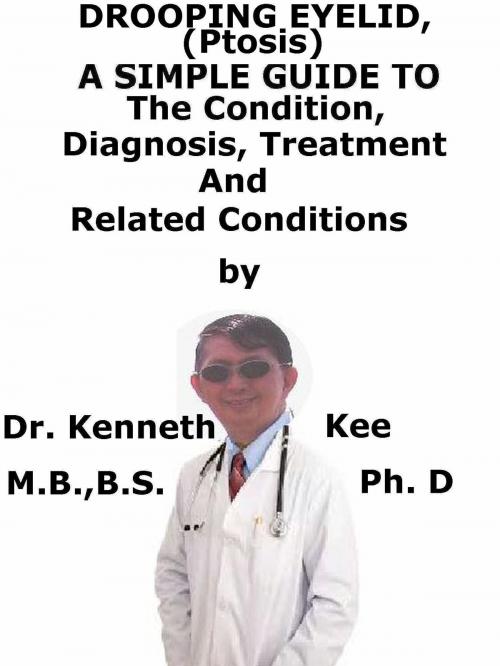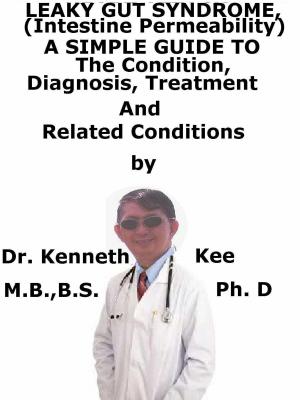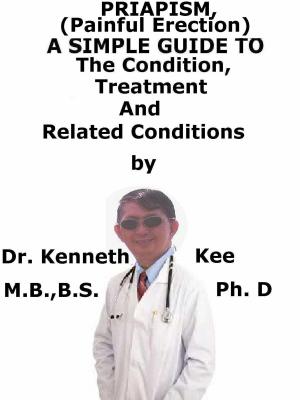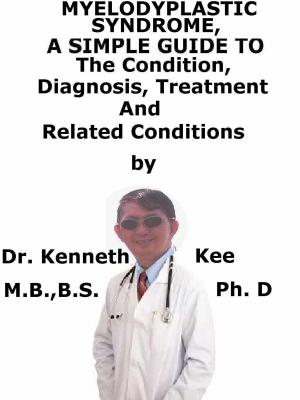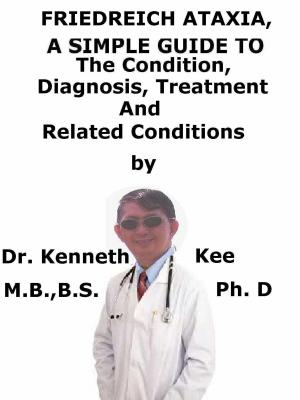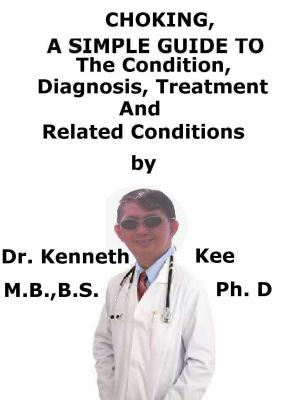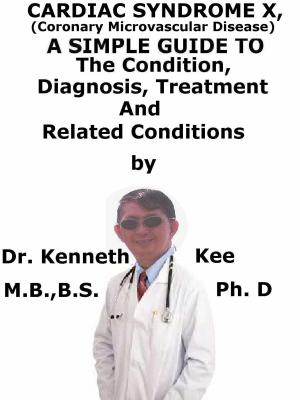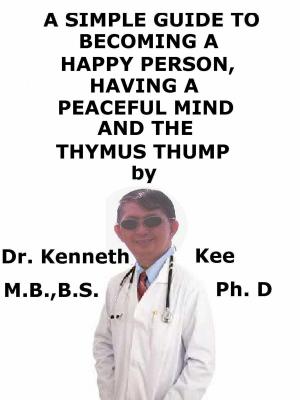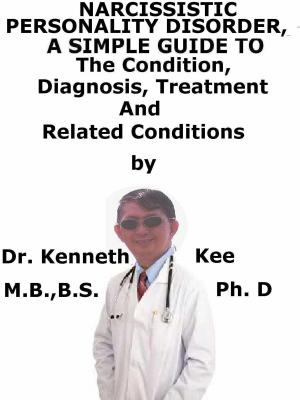Drooping Eyelid, (Ptosis) A Simple Guide To The Condition, Diagnosis, Treatment And Related Conditions
Nonfiction, Health & Well Being, Health, Ailments & Diseases, Vision, Medical, Specialties, Ophthalmology| Author: | Kenneth Kee | ISBN: | 9781370219117 |
| Publisher: | Kenneth Kee | Publication: | October 16, 2017 |
| Imprint: | Smashwords Edition | Language: | English |
| Author: | Kenneth Kee |
| ISBN: | 9781370219117 |
| Publisher: | Kenneth Kee |
| Publication: | October 16, 2017 |
| Imprint: | Smashwords Edition |
| Language: | English |
Eyelid drooping (Ptosis) is excess sagging of the upper eyelid.
The edge of the upper eyelid may be drooping lower than it should be (ptosis) or there may be excessive baggy skin in the upper eyelid (dermatochalasis).
Eyelid drooping is often a combination of both disorders.
It can be unilateral or bilateral, complete or incomplete, acquired or congenital.
Lid lag means delay in moving the eyelid as the eye moves downwards.
It is a frequent sign in thyroid disease when it is known as Graefe's sign.
A drooping eyelid is most often due to:
1. Weakness of the muscle that raises the eyelid
2. Damage to the nerves that control that muscle
3. Looseness of the skin of the upper eyelids
Drooping eyelid can be:
1. Caused by the normal aging process
2. Present before birth
3. The result of an injury or disease
Diseases or illnesses that may lead to eyelid drooping are:
1. Tumor around or behind the eye
2. Diabetes
3. Horner syndrome
4. Myasthenia gravis
5. Stroke
6. Swelling in the eyelid, such as with a stye
The lid may cover only the upper eye, or the entire pupil will be covered.
Disorders with vision will also be present.
Initially, there is just a sense that the very upper field of vision is being blocked.
When the drooping eyelid covers the pupil of the eye, the upper part of vision becomes obstructed.
Children may tip their head back to allow them see under the eyelid.
Tiredness and aching around the eyes may also be present.
Adults normally observe a change in their appearance and may complain that they always look sleepy and tired
They may also notice reduced visual fields.
A history should cover:
1. The date of onset,
2. Any previous trauma or eye surgery,
3. Relieving or aggravating surgery and
4. Any relevant family or medical history.
In children with congenital ptosis, there is a history of one sided or both sided drooping eyelid, the initial start of which may be found by looking at old family photographs.
Physical Examination
1. The palpebral fissure (PF) - the distance between the upper and lower eyelid in vertical alignment with the centre of the pupil.
2. The marginal reflex distance 1 (MRD-1) - the distance between the centre of the pupillary light reflex and the upper eyelid margin with the eye in primary gaze.
3. MRD-2 - the distance between the centre of the pupillary light reflex and the lower eyelid margin with the eye in primary gaze.
4. Levator function - the distance the eyelid travels from down-gaze to up-gaze while the frontalis muscle is held inactive at the brow.
5. The margin fold distance (MFD) - the distance from the upper eyelid margin to the fold of skin.
Diagnosis:
When drooping is on one side only, it is easy to determine by comparing the two eyelids.
Eyelid Drooping is harder to detect when it occurs on both sides or if there is only a slight anomaly.
Test to exclude myasthenia gravis, such as serum acetylcholine receptor antibody level, edrophonium chloride (Tensilon) test and electromyography (EMG) should be checked
Treatment:
Most cases of drooping eyelids are due to aging and there is no disease present.
Eyelid lift surgery (blepharoplasty) is done to repair sagging or drooping upper eyelids.
In milder cases, it can be done to improve the appearance of the eyelids.
In patients with more severe ptosis, surgery may be required to correct disruption with the vision.
In children with ptosis, surgery may be required to prevent amblyopia, also called "lazy eye."
Surgical methods are:
1. Frontalis slings,
2. Levator resection,
3. Correction of any abnormality of the levator muscle and
4. The Fasanella-Servat procedure
Mild cases may require no initial treatment.
TABLE OF CONTENT
Introduction
Chapter 1 Drooping Eyelid (Ptosis)
Chapter 2 Causes
Chapter 3 Symptoms
Chapter 4 Diagnosis
Chapter 5 Treatment
Chapter 6 Prognosis
Chapter 7 Horner Syndrome
Chapter 8 Myasthenia Gravis
Epilogue
Eyelid drooping (Ptosis) is excess sagging of the upper eyelid.
The edge of the upper eyelid may be drooping lower than it should be (ptosis) or there may be excessive baggy skin in the upper eyelid (dermatochalasis).
Eyelid drooping is often a combination of both disorders.
It can be unilateral or bilateral, complete or incomplete, acquired or congenital.
Lid lag means delay in moving the eyelid as the eye moves downwards.
It is a frequent sign in thyroid disease when it is known as Graefe's sign.
A drooping eyelid is most often due to:
1. Weakness of the muscle that raises the eyelid
2. Damage to the nerves that control that muscle
3. Looseness of the skin of the upper eyelids
Drooping eyelid can be:
1. Caused by the normal aging process
2. Present before birth
3. The result of an injury or disease
Diseases or illnesses that may lead to eyelid drooping are:
1. Tumor around or behind the eye
2. Diabetes
3. Horner syndrome
4. Myasthenia gravis
5. Stroke
6. Swelling in the eyelid, such as with a stye
The lid may cover only the upper eye, or the entire pupil will be covered.
Disorders with vision will also be present.
Initially, there is just a sense that the very upper field of vision is being blocked.
When the drooping eyelid covers the pupil of the eye, the upper part of vision becomes obstructed.
Children may tip their head back to allow them see under the eyelid.
Tiredness and aching around the eyes may also be present.
Adults normally observe a change in their appearance and may complain that they always look sleepy and tired
They may also notice reduced visual fields.
A history should cover:
1. The date of onset,
2. Any previous trauma or eye surgery,
3. Relieving or aggravating surgery and
4. Any relevant family or medical history.
In children with congenital ptosis, there is a history of one sided or both sided drooping eyelid, the initial start of which may be found by looking at old family photographs.
Physical Examination
1. The palpebral fissure (PF) - the distance between the upper and lower eyelid in vertical alignment with the centre of the pupil.
2. The marginal reflex distance 1 (MRD-1) - the distance between the centre of the pupillary light reflex and the upper eyelid margin with the eye in primary gaze.
3. MRD-2 - the distance between the centre of the pupillary light reflex and the lower eyelid margin with the eye in primary gaze.
4. Levator function - the distance the eyelid travels from down-gaze to up-gaze while the frontalis muscle is held inactive at the brow.
5. The margin fold distance (MFD) - the distance from the upper eyelid margin to the fold of skin.
Diagnosis:
When drooping is on one side only, it is easy to determine by comparing the two eyelids.
Eyelid Drooping is harder to detect when it occurs on both sides or if there is only a slight anomaly.
Test to exclude myasthenia gravis, such as serum acetylcholine receptor antibody level, edrophonium chloride (Tensilon) test and electromyography (EMG) should be checked
Treatment:
Most cases of drooping eyelids are due to aging and there is no disease present.
Eyelid lift surgery (blepharoplasty) is done to repair sagging or drooping upper eyelids.
In milder cases, it can be done to improve the appearance of the eyelids.
In patients with more severe ptosis, surgery may be required to correct disruption with the vision.
In children with ptosis, surgery may be required to prevent amblyopia, also called "lazy eye."
Surgical methods are:
1. Frontalis slings,
2. Levator resection,
3. Correction of any abnormality of the levator muscle and
4. The Fasanella-Servat procedure
Mild cases may require no initial treatment.
TABLE OF CONTENT
Introduction
Chapter 1 Drooping Eyelid (Ptosis)
Chapter 2 Causes
Chapter 3 Symptoms
Chapter 4 Diagnosis
Chapter 5 Treatment
Chapter 6 Prognosis
Chapter 7 Horner Syndrome
Chapter 8 Myasthenia Gravis
Epilogue
